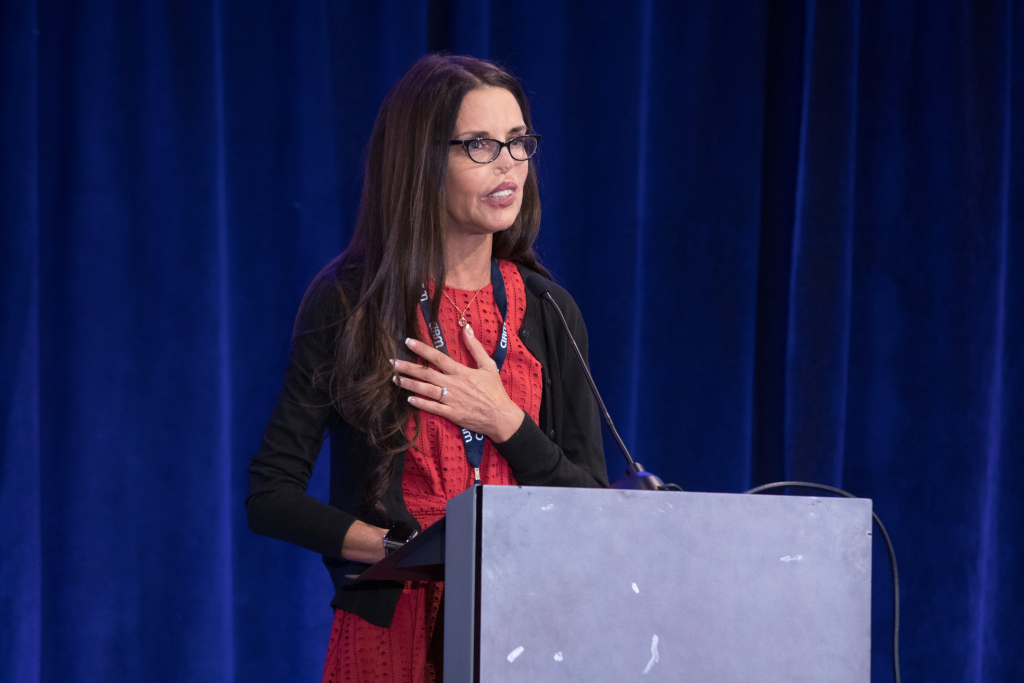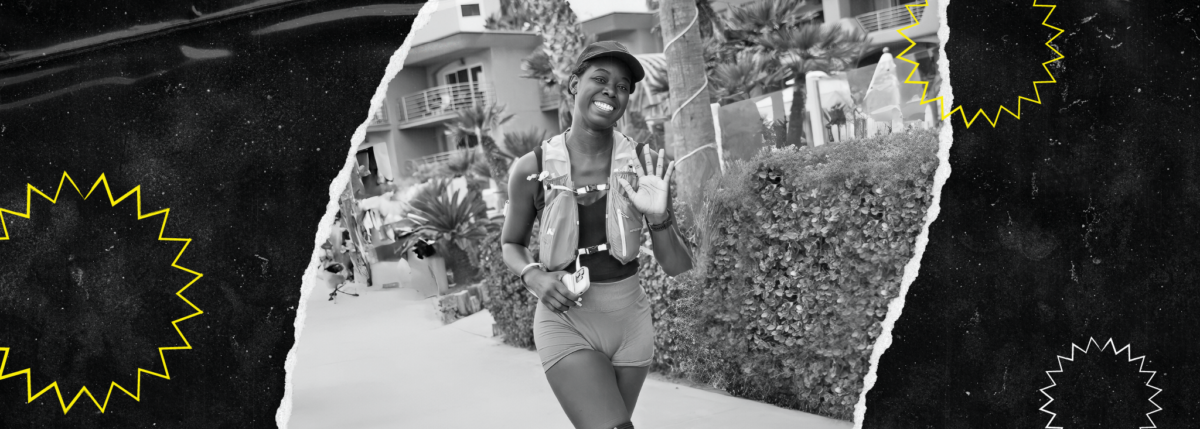My First Time Prescribing A FreeStyle Libre
Written by: T'ara Smith, MS, Nutrition Education
5 minute read
June 26, 2020
Anna Simos is a diabetes clinical research coordinator and diabetes care and education specialist (DCES) at Stanford University. Anna chats with Beyond Type 2 about the first time she prescribed a FreeStyle Libre to her Type 2 patients.
 Anna Simos is a diabetes clinical research coordinator and diabetes care and education specialist (DCES) at Stanford University. Diagnosed with type 1 diabetes at age 15, she uses her personal experience with the disease and professional training to help her patients meet their glycemic management goals. Part of her day-to-day is introducing her type 2 diabetes patients to new technology such as continuous glucose monitoring. Anna chatted with Beyond Type 2 about how she introduced the FreeStyle Libre 14 day System to one of her type 2 patients, who started continuous glucose monitor (CGM) for the first time, as well as the first time she administered the CGM, herself.
Anna Simos is a diabetes clinical research coordinator and diabetes care and education specialist (DCES) at Stanford University. Diagnosed with type 1 diabetes at age 15, she uses her personal experience with the disease and professional training to help her patients meet their glycemic management goals. Part of her day-to-day is introducing her type 2 diabetes patients to new technology such as continuous glucose monitoring. Anna chatted with Beyond Type 2 about how she introduced the FreeStyle Libre 14 day System to one of her type 2 patients, who started continuous glucose monitor (CGM) for the first time, as well as the first time she administered the CGM, herself.
BT2: Tell me about the first time you prescribed a FreeStyle Libre 14 day system to a Type 2 patient.
Anna Simos: It was within the first three months after the product was approved by the FDA and released to the public (in late 2017). As a diabetes care and education specialist, I felt like this was an opportunity to give my patients a tool that they could use. It would give them insight into things such as their blood sugar trends. Before the FreeStyle Libre, the primary barrier to getting accurate blood glucose data was pricking their finger several times a day to get the results. Now, they had something that they could have in their hand, they could just swipe over their arm and say “Oh look at my blood sugar now. Let’s look at what that meal just did to my blood glucose levels.”
It was a really exciting thing. It was empowering as an educator to have this device and to know that it was easier for people with type 2 diabetes to get it because of reduced insurance barriers, which is an improvement to the barriers to accessing other continuous glucose monitors (CGMs). I thought this was a big breakthrough for everyone with type 2 diabetes.
How did you introduce and explain the FreeStyle Libre to your Type 2 Patients? What were some of their questions when you first started prescribing this device?
Everyone wants to know: what does it look like? How intrusive is it? So, I use a technique that I’ve used in pediatric training. I show my type 2 patients a stuffed lion that has a Libre on its arm. Then when they see that, they remark that it’s so flat and discreet.
The next questions I get are if the device hurts and if it will impede them from doing certain activities. I assure them it doesn’t hurt, though they might feel a slight pinch when putting on the device; I also inform them they can wear it for 14 days and can continue with daily activities. All of a sudden, those barriers are lowered in the patient’s mind and they’re focused on the fact they can have this device on for two weeks at a time.
Another important aspect I discuss with my patients is alarm fatigue. Alarm fatigue is a huge piece to the puzzle of diabetes management with people wearing their devices. My patients preferred to not be alarmed each time something changed with their blood glucose. When you have diabetes, you know your body well enough to know how it behaves, even if it’s not well-managed.
And actually, if you’re not having good management over your diabetes, you’re typically more aware of what’s going on, and every time you hear a buzzer, it causes more stress. It’s just causing more stress. They love the fact that they could check their blood glucose levels whenever they like and don’t have to poke their fingers to do it.
So really, I think for the type 2’s especially, Abbott really gave them such a good tool. The other thing it provided them was it inspired them to exercise more because now they could see, “Oh wow, I took a walk and my blood sugar dropped!” It is such a great feedback loop.
How did your patients respond to wearing a CGM for the first time?
One story sticks out—I had this really nice older lady who had been having a lot of trouble with her diabetes. I think she had tried every diet there is, but her A1C was still elevated. She really didn’t want to be on any medicine. She has type 2, she really wanted to use diet and exercise to control her diabetes. She thought she was doing everything right, so I recommended her to try the FreeStyle Libre. She was already tracking her fasting blood glucose and blood glucose before meals, but not her post-meal blood sugar. That was the data we needed. The FreeStyle Libre would help us capture it.
With the CGM, we had unlimited testing; she actually couldn’t believe it. I mean, so we put this on, within the first three days I get a message from her going “You wouldn’t believe the data I just found! Do you know how high my blood sugars are after I eat this?” Her primary doctor and I were so excited for her.
She was really giving us the business about the possibility of having to use medication to manage diabetes. But the device helped her understand that this was not about her “being bad,” or her not doing something right, but that this was really her body and a dysregulation. It gave her the freedom to say, “Okay, I’ll start the meds, but I’m going to keep this sensor on and I’m going to adapt and figure out how to do this. So I want to be at the least amount of meds possible.” It was a win-win.
Did her post-meal glucose levels improve over time?
Oh yeah. She just had to be put on just some Glucophage (metformin). But she also had to understand that even a keto diet wasn’t really the answer. It was having a negative impact on her blood lipids—increasing her cholesterol and triglyceride levels. Keto was not the answer. Fasting was also not the answer. She had a strong family history of type 2 diabetes. Genetics was a strong factor in her own susceptibility to the disease. I think the Libre helped her understand what was going on with her own physiology and instead of her thinking she wasn’t working hard enough.
What do you enjoy about prescribing the FreeStyle Libre? Were there any surprises for you as you’ve introduced to patients?
It’s one of my favorite things to do for a person with type 2 diabetes and even some type 1s. I think that the Libre works great because for the type 2s especially, it gives them the key to understanding what impacts their blood glucose and helps them learn their natural trends. It teaches them about their blood glucose at nighttime while they’re sleeping. I like the fact that sometimes people tell me they get up in the middle of the night to check it.
It’s also helpful to teach my type 2 diabetes (T2D) patients about hypoglycemia and learn how their body reacts at certain blood glucose levels. They’ll tell me “Oh this is how I feel when I’m at 4.4 mmol/L80 mg/dL and this is how I feel at 6.7 mmol/L120 mg/dL. So many people tell me they know when their blood glucose is high or low, but the FreeStyle Libre really confirms that for them.
Sometimes a person might be having blood glucose of 12.2 mmol/L220 mg/dL and then all of a sudden, they take a severe dive and they get this really weird feeling where they’re not sure what’s happening. They don’t know it’s their blood sugar dropping. Seeing that decline on the graph really helps them understand what’s really happening to them. That’s really important.
For older patients with T2D, what is the best way to get them to try CGM technology like the FreeStyle Libre?
This is an important question. I take care of a lot of the senior patients and I have trained patients and their families on utilizing this tool. I’ve also trained patients who are coming out of strokes and are just starting to get back their cognition, as well as patients with dementia. I actually like this device for the seniors a lot and for the family caregivers because it gives them a little sense of control and it’s one tool that we can use with a simple scan to easily rule out blood glucose to determine why they’re not feeling well. Explaining the simplicity and ease-of-use of the FreeStyle Libre to not only the seniors, but also their caregivers is one of the best ways to convince older patients to try it.
This content was sponsored by Abbott, the makers of FreeStyle Libre 2—a Founding Partner of Beyond Type 2.

Author
T'ara Smith, MS, Nutrition Education
T’ara was diagnosed with type 2 diabetes in July 2017 at the age of 25. Since her diagnosis, she focused her academic studies and career on diabetes awareness and living a full life with it. She’s excited to have joined the Beyond Type 1 team to continue her work. Outside the office, T’ara enjoys going to the movies, visiting parks with her dog, listening to BTS and cooking awesome healthy meals. T’ara holds an MS in Nutrition Education from American University.
Related Resources

Antoine Gibson is no stranger to overcoming challenges. As a saxophonist and marathon runner living...
Read more

Danica Collins not only prepared for one of the most challenging physical events of her...
Read more

Beyond Type 1 is spotlighting inspiring athletes with type 1 diabetes as they prepare for...
Read more

